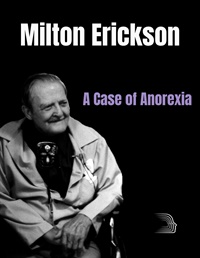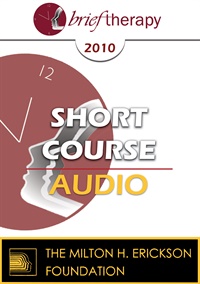
- Average Rating:
- Not yet rated
- Topic Areas:
- Children and Adolescent Therapy | Short Courses | Eating Disorders | Anorexia | Brief Therapy
- Categories:
- Brief Therapy Conference | Brief Therapy Conference 2010
- Faculty:
- Christine Silverstein
- Duration:
- 1:28:27
- Format:
- Audio Only
- Original Program Date:
- Dec 09, 2010
- Short Description:
- For centuries, clinicians have been baffled as to how to achieve healthy outcomes in the treatment of anorexia nervosa. In this workshop, the presenter will describe how she assisted a nine-year-old female soccer player, who experienced disordered eating. The techniques used to facilitate performance, such as goal-setting, mental rehearsal, and positive selftalk, will be explained, as well as unique approaches with Ericksonian hypnosis and imagery. The use of puppetry, which was an adjunct to Parts Therapy, will be demonstrated. With Christine Silverstein.
- Price:
- $15.00 - Base Price
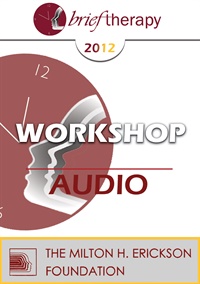
- Average Rating:
- Not yet rated
- Topic Areas:
- Hypnosis | Workshops | Anorexia | Eating Disorders | Brief Therapy
- Categories:
- Brief Therapy Conference | Brief Therapy Conference 2012
- Faculty:
- Camillo Loriedo, MD, PhD
- Duration:
- 2:46:47
- Format:
- Audio Only
- Original Program Date:
- Dec 08, 2012
- Short Description:
- BT12 Workshop 33 – Brief Therapy for the Treatment of Anorexia – Camillo Loriedo, MD, PhD Anorexia and Bulimia Nervosa will be presented in the frame of the Extreme Polarities Theory, and examine why, in some families, eating disorders develop and there is continuity among opposite forms of disturbances. Principles of intervention, as well as specific techniques will be presented, including the clinical applications (and advantages) of direct and indirect hypnosis.
- Price:
- $15.00 - Base Price
Tags: Anorexia Brief Therapy
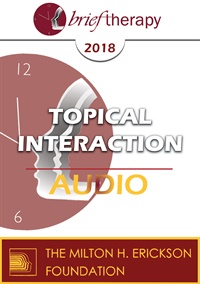
- Average Rating:
- Not yet rated
- Topic Areas:
- Topical Interactions | Anorexia | Eating Disorders | Bulimia | Brief Therapy
- Categories:
- Brief Therapy Conference | Brief Therapy Conference 2018
- Faculty:
- Camillo Loriedo, MD, PhD
- Duration:
- 1:00:27
- Format:
- Audio Only
- Original Program Date:
- Dec 08, 2018
- Short Description:
- Various attempts to treat these disturbances briefly have been made, but in most cases they proved to be unsuccessful due a very high relapse rate. To avoid a fearsome chronicity, a number of other factors, like alexithymia, low self-esteem, perfectionism, dissociation, dichotomous thinking, and others should be considered for treatment. Indications of how to deal with these factors in Ericksonian Brief Therapy will be offered.
- Price:
- $15.00 - Base Price
Credit available - Click Here for more information
- Average Rating:
- Not yet rated
- Topic Areas:
- Anorexia | Eating Disorders | Milton Erickson | Ericksonian Hypnosis and Therapy Techniques | Utilization | Hypnosis
- Categories:
- Erickson Materials | Erickson Streaming Video Collection | Milton H. Erickson Collections | Online Continuing Education
- Faculty:
- Milton H. Erickson, MD | Jeffrey Zeig, PhD
- Course Levels:
- Master Degree or Higher in Health-Related Field
- Duration:
- 1 hour
- Format:
- Audio and Video
- Original Program Date:
- Apr 27, 2020
- Short Description:
- In this video, you will see Erickson’s unusual way of treating anorexia. Erickson described himself as a person who has an iron fist, but a velvet glove. He knew when it was right to be firm, to be disciplined, and even to be assertive in work with a client. Dr. Jeffrey Zeig provides insightful commentary on this historic Erickson clip.
- Price:
- $29.95 - Base Price
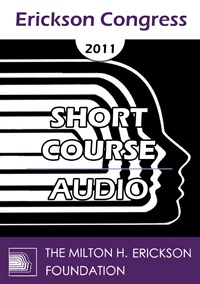
- Average Rating:
- Not yet rated
- Topic Areas:
- Short Courses | Unconscious Processes | Eating Disorders | Communication | Anorexia | Bulimia
- Categories:
- Erickson Congress | Erickson Congress 2011
- Faculty:
- Bart Walsh, MSW
- Duration:
- 1:28:11
- Format:
- Audio Only
- Original Program Date:
- Dec 09, 2011
- Short Description:
- Rapid remission of anorexia, bulimia and binge eating disorder results from this new approach. A form of unconscious communication known as ideomotor questioning is employed. Experiential exercises introduce participants to this communication style which allows safe access to psychobiological information. Clients are given instructions allowing them to maintain full management of this chronic illness on their own.
- Price:
- $15.00 - Base Price
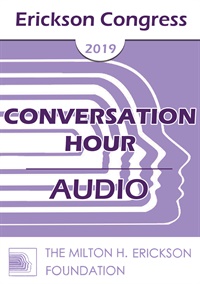
- Average Rating:
- Not yet rated
- Topic Areas:
- Conversation Hours | Eating Disorders | Ericksonian Hypnosis and Therapy Techniques | Anorexia | Family Therapy
- Categories:
- Erickson Congress | Erickson Congress 2019
- Faculty:
- Camillo Loriedo, MD, PhD
- Duration:
- 1 Hour 1 Minutes
- Format:
- Audio Only
- Original Program Date:
- Dec 14, 2019
- Short Description:
- Eating Disorders are a good example of massive interdependence among family members. Salvador Minuchin described families with Anorexia Nervosa as enmeshed families, and the interdependence it is certainly the base for enmeshment. Recent studies as well as more extended clinical experiences demonstrate that although bulimia appears to produce less reciprocal involvement, and some other form of apparent disengagement, we really can say that reciprocal interdependence in the family it always present, even if it assumes more hidden and complex forms.
- Price:
- $15.00 - Base Price
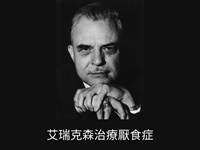
- Average Rating:
- Not yet rated
- Topic Areas:
- Anorexia | Milton Erickson | Eating Disorders
- Categories:
- Erickson Materials | Erickson Streaming Video Collection | World Languages | Chinese
- Duration:
- 1 hour
- Format:
- Audio and Video
- Original Program Date:
- Aug 26, 2021
- Price:
- $39.99 - Base Price


